Are you interested in enhancing the efficacy of your CNC routing operations without compromising on the cleanliness of the workshop? CNC router blower systems are one of the most important pieces of equipment in any modern manufacturing and construction. These systems provide a sophisticated dust collection solution that is integrated with a more advanced technique called process control. These are special vacuum systems used in CNC routers that work along rotational axes, ensuring that the dust is extracted even during the cutting operation.
In this article, we will look:
The use and development of advanced dust collection devices and how they affect qualitative indexes of production
Major parts of contemporary routers’ dust extracting equipment
How to choose an industrial-grade blower solution
System treatment and its improvement guidelines

What is a CNC Router Blower System?
Understanding CNC Router Blower Mechanisms
CNC router dust extraction is done using a complex vacuum cleaner system which works to get rid of wood and metal shavings as well as the fine dust produced during machining operations. This process starts at the cutting edge of the tool, where air at ‘cutting angle’ moves at very high velocities to create an inclined cutter and cuts the wood looking for orbital capture of debris even before they get airborne. State of the art blower systems come with a built-in feature called a cyclonic dust separator, where dust filled air is swirled in a Vortex, allowing denser particulates to drop to the base of the chamber while the light particulates rise.
Components of CNC Router Blower Systems
Main Blower Unit: This is a suited motorised system that serves as the primary suction system for dust collection for the CNC routing machine. It is usually rated between 1-5 HP for workshop usage.
Collection Hood: An attaching cleaning device that is integrated close to the cnc router cutting head whose purpose is to eat up the wastage created at its source and which can be altered to fit angles thus positioned.
Filtration Assembly: Multi filters made up of a HEPA and a pre-filter mainly to ensure that the dust collected from the routers are not more than 0.3 micron particles in size.
Ductwork System: This features smooth-coded pipes whose diameter escalates then carries the air from the router devices to the dust collector systems.
Collection Bin: A storage apparatus placed at the lower end of the router’s blower assembly which has hasty discharge features allowing quick disposal of routing debris accumulated.
Control Panel: A computerized system that controls the parameters of the angle cutter dust extractor such as motor torque, suction capacity, and programmed cleaning functions.
Pressure Sensors: Either measured quantities and over physical alarm limits or gauged praise levels on the router blower’s cabinet and on the filter efficiency of the cabinet, the users are availed messages to perform maintenance.
Cyclone Separator: The component of an equipment that involves applying centrifugal forces on air and dust in motion, to allow separation of coarse routing dust from fine dust particles, prior to their entry into other filtering devices.
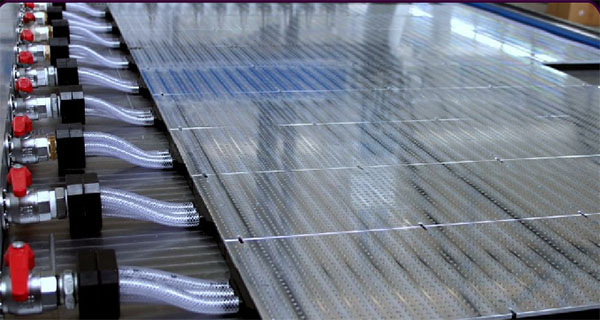
What is the role of Rounter Blower in CNC Manufacturing?
Effects on Production Safety
Workplace Safety Improvement:CNC router blowers are systems that eliminate harmful vapors created during the cutting process. The high-velocity suction system eliminates wood dust and metal particles that can be inhaled, mitigating the chances of respiratory illness.
Heat Evacuation System:Cutting routers blowers help in removing any heat produced at cut points to avoid damage to both tools and workpieces. The removal of air assists in cooling and prolongs the life of the tool as well as keeps the size of the tool constant.
Impact on Product Quality
Assurance for Precision Manufacturing:In order to enhance the machining precision, Machining process incorporates the use of router blowers to avoid unfavorable debris build-up. In order to maintain free cutting paths, allowing the continuity of tool operations, efficient dust containment is employed.
Benefits of Controlled Temperature:The CNC blowers provide a consistent airflow that helps in cutting allowing the targeted material not to deform and ensuring that the specified tolerances are achieved. Improvement in thermal management also leads to enhancement in surface finish quality.
Benefits for Process Control
Smart Operation Control:CNC router ventilation systems facilitate automatic control owing to the incorporation of integrated controls. Material and cutting parameters are fixed and regulated, if applicable, through the use of variable speed technology.
Evaluating The Attributes Of Cutting Tool: Thermal Performance:Modern blower technologies employ two variable parameters – the load on the machine and the heat regime of the environment. The thermal overload monitoring system operates in a continuous mode and an impartial and steady quality of processing assures performances within one model run.
Vacuum Efficiency Management:Adjusting vacuum pressure is performed in a automatic mode which increases overall performance for the cooling and wastage extraction. Smart systems fit for this purpose, are able to regulate air flow n an optimal level depending on the material being cut and the speed of the cutter.
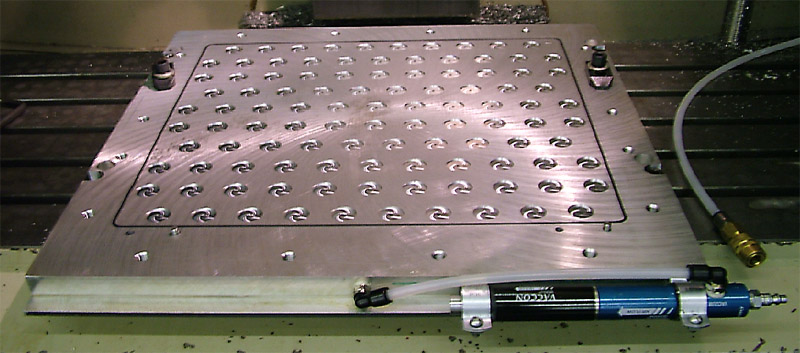
Main Types of CNC Router Blower
Single-Stage Blower Systems
Features: Direct suction motor, basic filtration, compact design
Advantages: Cost-effective, easy maintenance, simple installation
Applications: Small workshops, hobby CNC routing, light woodworking
The best quality blowers offered by manufacturers today are the single stage blowers that can be used for easy dust collection using a fan directly connected to a motor. Such units generally provide power in the range of 1-2 HP and are suited for removal of wood dust only. Most suitable for small scale CNC works where dust generation is minimal and only simple filtrations are required.
Industrial Cyclone Systems
Features: Cyclonic separation, multi-stage filtration, high-capacity motors
Advantages: Superior particle separation, continuous operation, efficient collection
Applications: Production facilities, heavy-duty manufacturing, industrial routing
Centrifugal cyclone systems use centrifugal force for dust control and have 3-5 HP motors and complex filtration processes. They are particularly useful in high production factories, where there are constant flows of waste material as suction power remains constant several cyclone systems are able work efficiently without exhausting any of the systems.
Portable Vacuum Units
Features: Wheeled design, flexible hose systems, self-contained filtration
Advantages: Mobility, versatile positioning, quick setup
Applications: Mobile workshops, varied CNC setups, multi-station operations
Mobile vacuum systems or central vacuum powder recovery systems are very flexible in that they have built in collection bins and provide multiple means of connection. Usually, these units provide suction power of 2-3 HP and have quick-disconnect ports for easy changeover.
Built-in Extraction Systems
Features: Integrated design, automated control, synchronized operation
Advantages: Space efficiency, optimal positioning, coordinated performance
Applications: Professional CNC machining centers, automated production lines
Industry-specific systems directly collaborate with CNC machines by equipping them with automated suction adjustment and debris capture directly at the cutting point. Such systems streamline the operation as they integrate with the controls of the machines themselves.
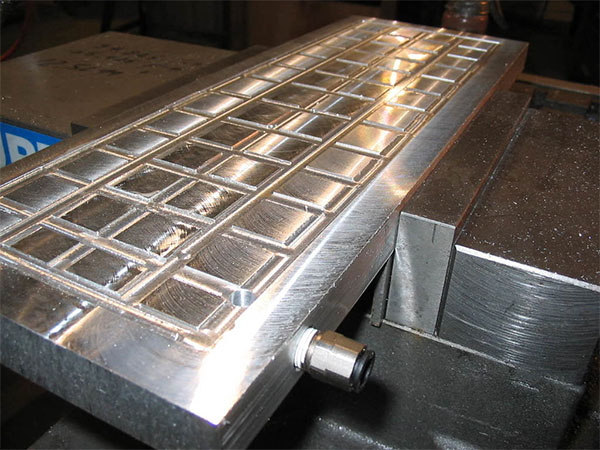
High-Vacuum Systems
Features: HEPA filtration, powerful motors, advanced monitoring
Advantages: Fine particle capture, superior air quality, precise control
Applications: Clean manufacturing, fine material processing
Specialized high-vacuum systems provide very powerful suction coupled with advanced filtration capabilities. Such systems generally have motors above 5HP and are able to filter particles measuring 0.3 microns or smaller, which is particularly important in the case of precision manufacturing environments.
Wet Collection Systems
Features: Moisture separation, chemical-resistant components, specialized filters
Advantages: Wet debris handling, coolant management, corrosion resistance
Applications: Metal machining, coolant-intensive operations
These systems are intended for the administration of wet substances and coolant mists, while their design features include water-repellent elements along with unique separation techniques. They are best suited for processes that involve machine tools and the management of liquid waste is of utmost importance.
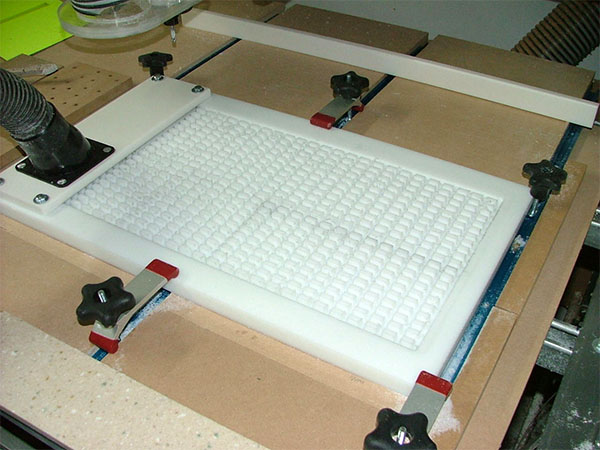
Advantages and Disadvantages of CNC Router Dust Collection Systems
Advantages of CNC Route Blower:
Improved Safety During Workshops Due To Enhanced Dust Control Facilities
Industrial router dust collection systems and CNC vacuum units effectively have a built-in dust collection system that helps eliminate hazards brought about by dust and other airborne particles. Newer routers come with dust extraction systems that uses intelligent blower control to trap upto 99.97% of dirt, thus creating a cleaner production area as well as complying with tight air quality standards.
Increased Machine Durability Even With Dust Control System Damages
Inbuilt exhaust systems provided in modern routers avoid the build-up of waste materials on important parts of the machine. Intelligent dust collection systems shield cutting tools as well as machine rods from damage caused by running the machine without a cleaning system, while built-in router ‘drying bags’ keep the working environment clean, helping to cut down servicing by about 40%.
Increased production efficiency with Smart dust management
Powerful routers fitted with blasters allow immediate cleaning of the work area after cutting thus removing any unnecessary materials. High performance dust collectors for instance can detect the raw material and adjust their suction strength accordingly, while effective dust control enhances the quality of finishes by over 30% without changing the performance speed of the cutting tool.
Disadvantages of CNC Route Blower:
Notable Expenditure on Collection Infrastructure
The expense of purchasing industrial CNC dust collection units and other workshop dust extraction systems is high. Networked duct systems and router air management systems often increase energy costs by 10-15%, thus, connected dust extraction systems tend to possess high operational costs.
Stringent Maintenance Routine
Debris control systems must have their filters replaced and their systems calibrated on a regular basis. Sophisticated router air filtration units need specific skills for maintenance while integrated router hoover systems may hinder production if the automatic router extraction system fails to work.
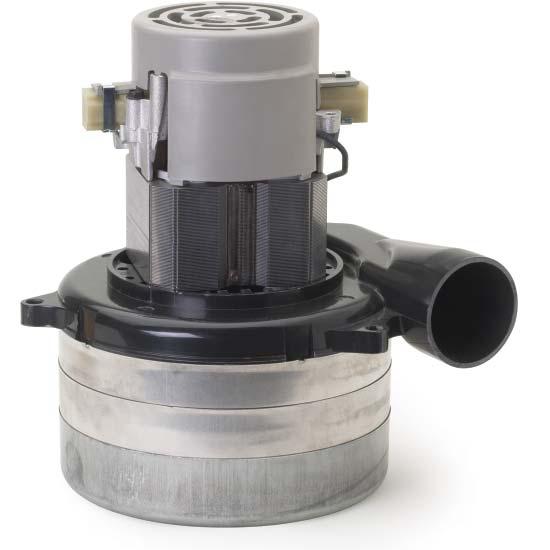
Experience Precision Manufacturing with TEAM MFG
Transform your CNC operations with TEAM MFG's advanced router blower solutions. Our industrial-grade extraction systems are engineered for demanding manufacturing environments, delivering superior performance and reliability.
Professional CNC Equipment Portfolio:
High-capacity Router Dust Collectors
Integrated Machine Control Systems
Precision CNC Routing Centers
Complete Workshop Solutions
Contact TEAM MFG today!
Essential Tips for CNC Router Blower System Maintenance
1. Systematic Filter Maintenance for Router Dust Collection
Track the health of the CNC router dust collector using the differential pressure maintained on either side of the cutter blocks. Wash the pre-filters of the router waste extraction system once a week during period of high-speed routing. Replace HEPA filters based on the CNC machine hours worked and the type of materials machined. Keep the manufacturer’s own router vacuum filters because they will greatly reduce the turnaround time for repair.
2. Router Ductwork and Collection Port Management
Check the ducting used for CNC routing every month particularly on the areas where high debri suction cutting heads are located. After an extensive milling process beyond what routers can handle, clean the router’s exhaust ports. Main router collection ducts are to be cleaned every three months with a dust collection head and attached to an industrial vacuum. Inspect the routing station connections and the port sealing to ensure that there is effective dust extraction.
3. CNC Blower System Performance Monitoring
Assess the performance of the router dust collections motor on various cutting speeds. Amperage draw for a router vacuum is monitored during operations of various materials. After the routing of abrasive materials, the router blower impeller should be cleaned. Evaluate performance metrics of CNC routers with various routing materials.
4. Router Waste Collection Management
Take out the bins in charge of storing debris from the CNC machines before they are filled fully especially after a long routing session. Carry out waste management in the course of making high-speed cuts of various types. After routing abrasive materials, check the seals of the dust bin in the router. Control exposure especially in routing where wood processing is done and especially composite materials.
5. Calibration of the Smart Extraction System
Every three months, recalibrate the CNC router pressure stat machines around the cutting zones. Upgrade the anti-dust router software in the dust extraction system to improve the dust collection efficiency. Carry out functional and performance testing of the emergency turn off switches within high-speed routing operations. Check the functioning of the automatic suction systems at varied cutting conditions and with different tools.
Frequently Asked Questions (FAQs) About CNC Router Blower
Q: What distinguishes a CNC router dust collection system from standard workshop vacuum systems?
The high vacuum extractions are meant for CNC routing cut out waste. It has active control, more than one collecting point and works in conjunction with the machine. It has an intermediate setting and can be operated without overheating during routing work.
Q: How do I know what size blower I should use for my cnc router system?
It is dependent on material type, machine cut volume and types of processing done at the same time. Don't forget the total CFM, static pressure and collection points to be serviced. Remember to include the expansion plan for the system as well.
Q: What maintenance schedule should I follow for optimal router dust extraction?
Change filters on schedule based on actual machining time, monthly inspect the ductwork, perform a motor check in three months. Also include calibration of the sensors, handling and removing the waste bin, as well maintaining the extraction openings after each use.
Q: Why does my CNC router dust collection system lose suction power during operation?
Saturation of the filter, blockage of the ducts or straining the motor are some of the most frequent reasons. Also check for clogging at the entry ports and junctions, such as gaskets, as well as the readings on the pressure gauge.
Q: What modifications can I make to improve the efficacy of dust collection in high-speed routing activities?
Modify extraction rates depending on the cutting parameters, arrange collection ports rightly, ensure the right air velocity. Utilize real-time pressure response and also the material-based settings.
Q: What security features should I ensure are present in a CNC router blower system?
HEPA filter certified, emergency shut off, explosion proof parts when necessary. There should be a pressure gauge, self-diagnostic systems, and earthing.
Q: Why would I want to stop using a single stage dust collecting unit and about when is that 'upgrade' necessary?
For instance when the volume being worked increases, when working with very fine particles or better filtration is required. This in turn will vary with materials and production levels.
Q: How to connect dust control between the computer software that operates the CNC router?
Do it through machine control interface and connect with the cutting parameters, and introduce speed control. Train for emergency measures and monitoring.
Q: Please guide me on which troubleshooting techniques to employ when extraction fails to perform as expected?
Examine the state of the filter, check for leaks on duct joints, and measure performance of the motor. Perform pressure tests, assess collection performance, and check for wear and tear on internal components.
Q: What measures can I employ in order to conserve energy without compromising the efficiency of the dust collection system?
Variable speed drive should be used, design collection port to allow for minimum air flow losses, control dust management by zones. Keep track of trends and improve the system by changing its parameters.





















